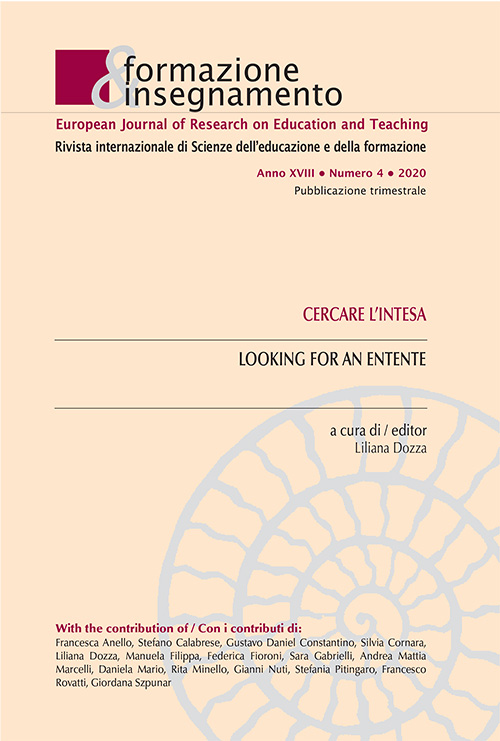Comprendere e apprendere con le rappresentazioni sensorimotorie
DOI:
https://doi.org/10.7346/-fei-XVIII-04-20_05Abstract
Il contributo propone un modello di apprendimento basato sul riconoscimento della natura sensorimotoria delle rappresentazioni mentali, come dimostrato dalle più recenti ricerche neuroscientifiche. L’ipotesi è che, anche nei contesti educativi, la comprensione di un concetto o di un testo sia collegata alla possibilità di cogliere, a livello automatico, la “relazione oggetto-scopo”. Si sostiene che il livello di comprensione sia collegato al grado di "sintonizzazione" che si crea tra gli schemi percettivo-motori (precedentemente mappati dal soggetto in base allo scopo) e la struttura di relazioni che si coglie nel contesto. Si ipotizza anche il coinvolgimento di un meccanismo cognitivo simile alla metafora, soprattutto quando le strutture di relazione percepite non coincidono con gli schemi posseduti; la metafora agirebbe a livello neurale, orientando la selezione degli schemi sensoriali-motori che portano alla comprensione. Pensiamo che la conoscenza di tali meccanismi e delle loro implicazioni nell’apprendimento, possa fornire alle scienze dell’educazione e della formazione una direzione di ricerca utile alla costruzione di buone pratiche d’insegnamento.
##submission.downloads##
Pubblicato
Come citare
Fascicolo
Sezione
Licenza
Copyright (c) 2020 Pensa MultiMedia

TQuesto lavoro è fornito con la licenza Creative Commons Attribuzione 4.0 Internazionale.
Formazione & insegnamento è distribuita con la seguente licenza: Attribution 4.0 International (CC BY 4.0).
Per ulteriori dettagli, si rimanda alle Politiche di archiviazione e ai Termini di Copyright e Licenza.





